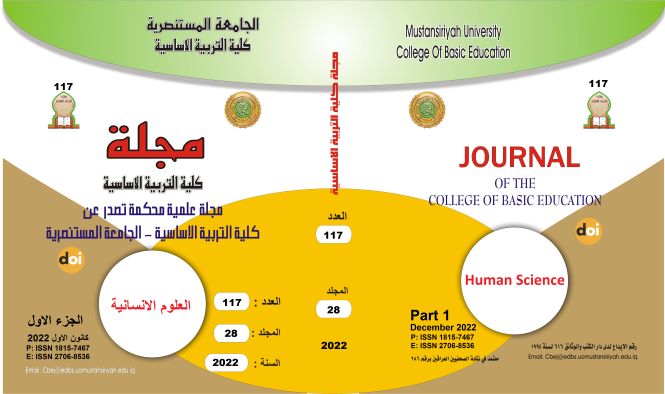Modern techniques of thermal insulation and its impactful dimensions in interior environment designs
Main Article Content
Abstract
The research dealt with the study of modern technologies for thermal insulation in the field of construction and building for our need to apply high-efficiency building materials that solve technical and aesthetic problems while providing the best techniques and materials in order to show a decent and sophisticated environment. Therefore, the interior designer must learn about the modern technologies of thermal insulation materials, which develop according to the design idea, the surroundings of the internal environment and the requirements of the times. Thermal insulation materials are an endless source for the interior designer who is interested in solving it in the formulation of the design idea. Here lies the research problem in the following question: What is the role of modern technologies for thermal insulation? What are its impactful dimensions in the designs of the interior environment? While the objective of the research is to reveal the role played by modern technologies for thermal insulation and to show its impactful dimensions in the designs of the interior environment, through the use of formal structural elements of these techniques and the impactful transformations of contemporary aesthetics. As for the limits of the research, it was objectively determined by studying the modern technologies of thermal insulation and its impactful dimensions in the designs of the interior environment, while its spatial and temporal limits included the interior spaces represented by (reception halls) in the Arab Gulf countries for the period from 2011 to 2019. While the second chapter included (with its main title: Study of modern technologies for thermal insulation) (and the second with its main title: Studying the impact of design on the internal environment), while the third chapter was devoted to identifying the topic of research procedures represented by the research methodology based on the descriptive approach in the analysis of sample models. It relied on the intentional selective method, and the sample was 29% of the research community, and the research tool used was the analysis form. The researcher's style: consistency between analysts, and thus the percentage of reliability coefficient reached 84%, while the fourth chapter included extracting the results of the research, the most important of which are:
1_ The interior designer had the ability to study the effect of visual design relations to link the functional and aesthetic aspect through (light, color and texture) that appeared to be realized within the internal determinants of the first and second models. While the most important conclusions emerged through the following:
1_ The characteristics of the design formations structure are based on achieving the function of the interior space through the internal determinants as well as enriching the space expressively and psychologically, taking into consideration the achievement of the aesthetic performance within the space, taking into account the mutual relationship and compatible with the environment as a source of inspiration, influential and influenced by all interior designs. While the chapter also presented the recommendations and proposals and the beneficiaries.
Article Details

This work is licensed under a Creative Commons Attribution-ShareAlike 4.0 International License.
